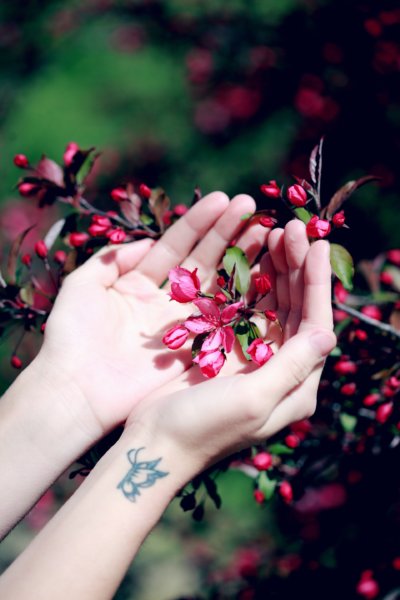Ahimsā is a yogic precept. Whether we are yogis, practice on the mat or not, ahimsā or non-harming is relevant in our world, as it is in our persona lives. The question is how do we practice ahimsā in the world.
When we say yoga, often we are referring to the asanas or the postures. Āsana, however, is one of the eight limbs of Patanjali’s eight-fold path of yoga. The others are : yama (external restraint), niyama (internal restraint), prāṇāyāma (breath and energetic regulation), pratyāhāra (uncoupling of the senses), dhāraṇā (concentration meditation), dhyāna (absorption), and samādhi (integration).
I’ve been digging more into Michael Stone’s writings of late. My mind has been wandering along question lines of the integration of yogic philosophy into a groundedness in today’s world.
In his book, Yoga For a World Out of Balance, he has a chapter titled Restraint In Times of Unrestraint. I think most of us would agree that our world today is indeed out of balance and unrestraint is part of the path that led us here. What within us, left unwitnessed, has led us to the systems in place? I am however not going judge it as right or wrong, where we are. Who am I to say what is part or not part of our awakening and to staying woke?
Yogic philosophy, for me, contains gems that I practice, along with Buddhist precepts, Mystic Christian ideas, gynocratic principles, agamous leanings, and other work-in-progress perspectives. We live in a world where we can benefit from traditions, cultures, and mystery schools, like never before.
Yamas, Briefly
The yamas, or the ethical guidelines, are the first of the eight limbs. Michael Stone writes the yamas is where he begins with students to build a foundation for a spiritual practice in contemporary life. “This approach helps dismantle our lofty associations with the term “spiritual” so that practice begins grounded in the material”¹ and so we tune into, rather out of, the world. We learn to relate to ourselves, others, animals, nature, and the human-built.
The five guidelines of the yamas are:
- Ahimsā (non violence/ non harming)
- Satya (honesty and truthfulness)
- Asteya (non stealing)
- Brahmacarya (wise use of energy)
- Aparigrahā (non coveting)
In this first of the series on the yamas, we will look at what ahimsā means and how we can practice it in our lives, off the mat, and outside the classroom.
Ahimsā
The ideas of ahimsā, especially how to practice this in life, have been floating in my head for years. I did not become a pescatarian because of it though I feel moving towards vegetarianism was a natural unfolding of the path for me personally. Referring to what Michael Stone wrote about spirituality being lofty, I think it’s important to practice acceptance, allowing my and your path to unfold and blossom organically. Forcing someone into our construct of right and wrong is a form of violence.
So What is Ahimsā?
Nonviolence seeks to clear the mind of the delusion of rightness.
Michael Stone, Yoga For a World Out of Balance²
As Michael Stone points out in his writings that we have convictions and ahimsā does not preclude us from action. The question is are we clutching onto our views? Do we know our convictions are conditioned? Are our beliefs, words, and actions based on the illusion of separation? Do we realize that we have constructed many ways, subtle and pervasive, to help us feel real and secure? By naming an enemy or “other”, we create self-identity. For example, when people ask what makes us Canadian, many joke “we aren’t American.” So it’s not always unfriendly or bloody, such as the Cold War or any warfare that we can find violence.
We live through opposition far more than we realize or care to admit. “Exploitation is the opposite of renunciation: no synchronization, no intimacy, no togetherness.”³
It’s easy to see violence in the world. Merriam-Webster defines violence as “the use of physical force so as to injure, abuse, damage, or destroy.” It is however not just physical. It is also emotional and mental. Pause here for a moment and think of how you may be violent, without compassion, with yourself. How do you exploit yourself or allow to be exploited? What is your conversational style? How do you respond to change and challenge? Where do you source your food? Or the materials of the clothing you buy?
Often what happens when we start to see, as the illusions dissolve, we feel despair. Michael Stone reminds us that “nihilism and despair are not helpful response because our attitude penetrates everything we do and negativity only serves to reinforce apathy and anger….and when I have the tools to work with my capacity for apathy, distraction, laxity of attention, or even hyperactivity, I have more clarity in my activities and I am better able to serve others.”⁴
Practicing Ahimsā
For me the starting point for practicing ahimsā is to become aware of all the internal anger, hurt, resentment, along with how I may be projecting that onto other people and the external world. It’s being present, allowing to surface “ancestral habit energies that need attention, redirection, and transition.”⁵
See where and how our mind is yielding to Kama (lust), Krodha (anger/ hate), Lobha (greed), Moha (delusion/infatuation), Mada (pride) and Matsarya (envy/jealousy).⁶
Shining a light on what our beliefs actually are, and the fears from whence they come, can illuminate why we hold onto rigid views of right and wrong, just and unjust, us and them. Can we start to believe that violence is not the only response to violence?
Michael Stone reminds us that nonharming is more than action; it’s a sense of being. It’s being present to the ever-changing currents and the complexities of being in the world, with ourselves and others. Moving beyond non-duality, we are the invitation for others to drop their shoulders, in a great sigh of contentment, allowing their need for hostility to evaporate.
1 Live from kindness and love
The world is not black and white; it contains darkness (unconsciousness) and light. Living from love and light is not to deny where our internal and external worlds have areas where our light of consciousness has not reached. It is to understand reality is subjective and we are not here to police or dictate what is “right”. We can choose the lens through which to connect with our own. Having experiences is a big part of why we are here.
This also means not buying into the negative bias that our survivalist mind bends towards. Question the beliefs we have about who we are, how the world “works”, and the conditioning we received as part of our lineage and being human.
2 Observe Your Speech
As a practitioner and a writer, what I say and write – how I communicate – has been a field of exploration and learning. Over the years, I’ve let go of many words, phrases, and sayings. When I used to throw out words like hate, unknowingly it was a way to stop the conversation in the tracks, the encroachment into private territory and emotions I was not ready to lay bare. The jagged edges that were walls of sorts. How are we unwilling to sit with discomfort, complexities, and uncertainties? How can we be curious and non-attached witnesses?
It is insightful to examine, for example, the motivation behind posting or responding on social media. What kind of language are we using to approach and connect? Do we use idioms and quotes indiscriminately, unquestioningly? Do we speak out of fear, or love?
Can we be so present to what another is sharing, to listen with openness and generosity? To hold space for ourselves and others, to be heard and witnessed.
3 Let Go Of Linearity
There are no rules to any practice, including that of ahimsā. It is about being present in the moment, being open to what is required of us. There are no absolutes, as Michael Stone writes, for all is alive. Flow with the dynamics. There is also no linearity – outlawing guns is not the ultimate answer. That is still thinking within duality.
We practice ahimsā not to feel safe or morally lofty. It is not to avoid others doing harm to us if we don’t do them harm. The undulating energy of ahimsā radiates, though the where we may not know and we don’t need to.
Here are more of Michael Stone’s contemplations on ahimsā.
Sources
1 Yoga For a World Out of Balance. Michael Stone. Shambhala Publications Inc, 2009. p13.2 Ibid., p62.
3 Ibid., p63.
4 Ibid., p64-65.
5 Ibid., p72.
6 On the Practice of Ahimsa [link]




